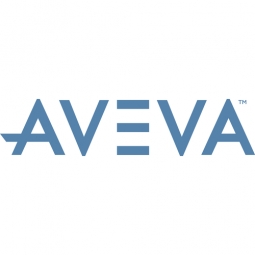下载PDF
Coca Cola Swaziland Conco Case Study

技术
- 应用基础设施与中间件 - 数据可视化
- 自动化与控制 - 监督控制和数据采集 (SCADA)
- 平台即服务 (PaaS) - 数据管理平台
适用行业
- 食品与饮料
适用功能
- 设施管理
用例
- 建筑能源管理
挑战
可口可乐斯威士兰,南非希望找到一种能够实现以下结果的解决方案: - 在一年内减少 20% 的能源消耗。 - 制定一系列战略举措,争取企业管理层的承诺并提高员工意识,同时帮助实现部门目标并投资于有助于能源管理的工具。 - 制定一系列战术举措,以优化车间的能源使用。这些措施包括仅在非高峰时段为叉车充电和运行冷藏室,仅在工作时间运行除尘器以及根据某人的存在来设置灯光和空调。 - 提高对工厂和其他流程的了解。 - 为某些进程启用有限的非侵入式控制功能。
客户
可口可乐斯威士兰康科有限公司
关于客户
可口可乐斯威士兰康科有限公司
解决方案
可口可乐斯威士兰选择了系统集成商 Systems Anywhere Coastal 来实施能源管理项目,后者又从 Invensys Wonderware 稳定中选择了一系列软件解决方案。这些解决方案包括系统平台、Historian 和客户端、InTouch SCADA / HMI、信息服务器和用于移动报告的 SmartGlance。 InTouch 系统让操作员随时了解工厂及其各个部门的准确实时状态,而管理层则通过 SmartGlance 移动报告设施在他们的智能手机上随时了解情况。这种实时信息可用性允许研究以前每个人都看不到的因果情景。
收集的数据
Energy Consumption Rate, Energy Cost Per Unit, Facility Management, HVAC ( heating, ventilation, air conditioning), Throughput Per Plant
运营影响
相关案例.

Case Study
The Kellogg Company
Kellogg keeps a close eye on its trade spend, analyzing large volumes of data and running complex simulations to predict which promotional activities will be the most effective. Kellogg needed to decrease the trade spend but its traditional relational database on premises could not keep up with the pace of demand.

Case Study
HEINEKEN Uses the Cloud to Reach 10.5 Million Consumers
For 2012 campaign, the Bond promotion, it planned to launch the campaign at the same time everywhere on the planet. That created unprecedented challenges for HEINEKEN—nowhere more so than in its technology operation. The primary digital content for the campaign was a 100-megabyte movie that had to play flawlessly for millions of viewers worldwide. After all, Bond never fails. No one was going to tolerate a technology failure that might bruise his brand.Previously, HEINEKEN had supported digital media at its outsourced datacenter. But that datacenter lacked the computing resources HEINEKEN needed, and building them—especially to support peak traffic that would total millions of simultaneous hits—would have been both time-consuming and expensive. Nor would it have provided the geographic reach that HEINEKEN needed to minimize latency worldwide.

Case Study
Energy Management System at Sugar Industry
The company wanted to use the information from the system to claim under the renewable energy certificate scheme. The benefit to the company under the renewable energy certificates is Rs 75 million a year. To enable the above, an end-to-end solution for load monitoring, consumption monitoring, online data monitoring, automatic meter data acquisition which can be exported to SAP and other applications is required.

Case Study
Temperature Monitoring for Restaurant Food Storage
When it came to implementing a solution, Mr. Nesbitt had an idea of what functionality that he wanted. Although not mandated by Health Canada, Mr. Nesbitt wanted to ensure quality control issues met the highest possible standards as part of his commitment to top-of-class food services. This wish list included an easy-to use temperature-monitoring system that could provide a visible display of the temperatures of all of his refrigerators and freezers, including historical information so that he could review the performance of his equipment. It also had to provide alert notification (but email alerts and SMS text message alerts) to alert key staff in the event that a cooling system was exceeding pre-set warning limits.

Case Study
Coca-Cola Refreshments, U.S.
Coca-Cola Refreshments owns and manages Coca-Cola branded refrigerators in retail establishments. Legacy systems were used to locate equipment information by logging onto multiple servers which took up to 8 hours to update information on 30-40 units. The company had no overall visibility into equipment status or maintenance history.

Case Study
Versiondog Comes for Coffee
“Well before it went live, we had worked out a clear plan for exactly how we were going to use the new versiondog versioning and data management software from AUVESY,” says Michael Mrugalla, who works in process automation at the Mainz plant. “We also had to think about what backups really meant for us. With all our field devices, control programs, drive systems, programming languages, file formats and software applications, we needed to know precisely what we have to back up in case a breakdown (e.g. a power outage) stops production. Because the whole point of making a backup is to be able to recover data quickly and easily when something goes wrong and continue working as if nothing had happened. But that means more than simply restarting production, it also means we need to be able to pick up where we left off with our ongoing process maintenance and optimisation.” It was particularly important to Nestlé that their backup strategy be built around a sin-gle continually active and universally appli-cable solution. And they wanted it to maintain a centralised backup of all the data necessary for both recovery and further development for all devices and all related projects (i.e. every piece of hardware and software). And the programs actually running on controllers need to correspond precisely with the data on the server. If not, the reason must be easily identifiable and the valid version always available to be reloaded onto the device.





